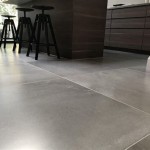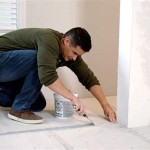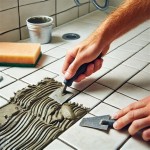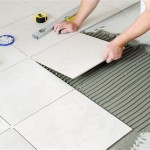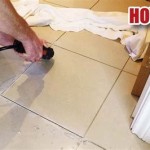How to Replace a Ceiling Tile Around a Sprinkler Head
Replacing a damaged or stained ceiling tile is a common maintenance task in commercial and residential buildings with suspended ceiling systems. When the affected tile is located around a sprinkler head, the process requires extra care and attention to ensure the fire suppression system remains undisturbed and functional. This article provides a comprehensive guide on how to safely and effectively replace a ceiling tile surrounding a sprinkler head, minimizing the risk of damage to the sprinkler system and ensuring the integrity of the ceiling grid.
Before commencing any work, it is imperative to understand the potential risks involved. Sprinkler heads are sensitive components designed to activate under specific temperature conditions. Accidental contact or undue pressure can damage the head, leading to malfunction during a fire or even accidental activation, resulting in water damage. Therefore, meticulous planning and careful execution are crucial for a successful and safe tile replacement.
Key Point 1: Preparation and Safety Measures
The initial step involves proper preparation and implementation of safety measures. This stage sets the foundation for a smooth and risk-free tile replacement process.
Firstly, gather the necessary tools and materials. These typically include:
- A new ceiling tile matching the existing tiles in size, pattern, and material.
- A utility knife or sharp blade.
- A straight edge or ruler.
- Safety glasses.
- Work gloves.
- A stepladder or stable platform.
- A dust mask (optional, but recommended).
- A small container to catch any debris.
- A stud finder (may be needed to locate the suspension grid if it is hidden above the tile).
Secondly, conduct a thorough visual inspection of the sprinkler head and the surrounding area. Note the type of sprinkler head (e.g., recessed, pendant, sidewall) and its condition. Look for any signs of damage, corrosion, or leakage. Document any existing issues before starting the replacement. This documentation can be useful later if any pre-existing damage is discovered during the process.
Thirdly, ensure the work area is safe and free from obstructions. Move any furniture or equipment that might hinder access to the ceiling tile. Place a drop cloth or protective covering on the floor beneath the work area to catch any falling debris and prevent damage to the flooring.
Fourthly, prioritize personal safety. Wear safety glasses to protect eyes from falling debris. Work gloves will improve grip and protect hands from sharp edges. A dust mask is recommended to prevent inhalation of dust and particles released during the tile removal and installation process.
Finally, before proceeding, it is important to understand that replacing a ceiling tile around a fire sprinkler may require a permit or notification to the local fire marshal or building management, depending on local regulations and building policies. Always check local regulations and rules before proceeding.
Key Point 2: Removing the Damaged Ceiling Tile
The removal process requires a delicate approach to avoid disturbing the sprinkler head or damaging the surrounding tiles and grid.
Begin by carefully lifting the edges of the damaged ceiling tile. Use the stepladder to gain comfortable access to the tile. Gently push the tile upwards and tilt it to disengage it from the suspension grid. If the tile is stuck, use the utility knife to carefully score along the edges where the tile meets the grid. This will help to release the tile without damaging the surrounding tiles or the grid.
Once the tile is partially dislodged, carefully lower it, paying close attention to the sprinkler head. The tile will need to be maneuvered around the sprinkler head. Rotate the tile carefully to find the easiest orientation for removal.
If the tile is particularly brittle or breaks during removal, take extra precautions to prevent debris from falling into the sprinkler head. Use the small container to catch any falling pieces. Once the tile is completely removed, inspect the sprinkler head and the surrounding grid for any signs of damage or debris. Clean the area with a soft brush or vacuum cleaner to remove any dust or particles.
In some cases, the sprinkler head may be surrounded by a trim ring or escutcheon. This decorative piece covers the opening around the sprinkler head and provides a finished look. If the trim ring is attached to the ceiling tile, carefully detach it before removing the tile. If the trim ring is attached to the sprinkler head, take extra care not to disturb it during the tile removal process.
It is crucial to avoid applying any direct pressure to the sprinkler head during the tile removal process. Any excessive force could damage the head and compromise its functionality. Work slowly and methodically, taking breaks as needed to maintain focus and prevent errors.
Key Point 3: Installing the New Ceiling Tile
Installing the new ceiling tile requires precise measurements and careful cutting to ensure a proper fit around the sprinkler head.
Firstly, measure the distance from the center of the tile to the center of the sprinkler head opening in the damaged tile. Transfer these measurements to the new tile. Use a pencil to mark the location of the sprinkler head on the new tile.
Secondly, determine the diameter of the sprinkler head and the trim ring (if applicable). Using a compass or circular template, draw a circle on the new tile centered on the marked location. The diameter of the circle should be slightly larger than the diameter of the sprinkler head or trim ring to allow for easy installation.
Thirdly, carefully cut out the circle using the utility knife. Place the tile on a flat, stable surface. Use the straight edge to guide the knife and ensure a clean, precise cut. Score the circle multiple times with light pressure before applying more force to cut through the tile completely. Avoid applying excessive pressure, which could damage the tile.
Fourthly, test-fit the new tile around the sprinkler head. Gently lift the tile and position the cutout around the sprinkler head. Ensure that the tile fits snugly against the surrounding tiles and that the sprinkler head is centered in the cutout. If the tile is too tight, carefully trim the edges of the cutout until it fits properly. If the tile is too loose, consider using shims to fill the gaps.
Fifthly, once the tile fits properly, carefully lift it into place and tilt it to engage it with the suspension grid. Ensure that the edges of the tile are properly seated in the grid. Gently push the tile upwards to secure it in place. Check that the tile is level with the surrounding tiles.
Finally, if a trim ring was removed, reattach it to the sprinkler head or the ceiling tile. Ensure that the trim ring is securely in place and that it covers the opening around the sprinkler head. Clean the new tile with a soft cloth to remove any fingerprints or smudges.
Replacing a ceiling tile around a sprinkler head demands a methodical and cautious approach. By adhering to these guidelines, individuals can effectively execute the task, safeguarding the fire suppression system's integrity and the well-being of the building's occupants.

How To Install Ceiling Tile With Sprinkler Head In The Middle Skill Stacking

How To Remove And Replace A Ceiling Tile With Fire Sprinkler

How To Install Ceiling Tile With Sprinkler Head In The Middle Breakdown Skill Stacking

How To Install Ceiling Tile With Sprinkler Head In The Middle Breakdown Skill Stacking

How To Replace A Recessed Fire Sprinkler Escutcheon

How To Replace A Recessed Fire Sprinkler Escutcheon

How To Remove And Replace A Ceiling Tile With Fire Sprinkler

Ceiling Tile Sprinkle Hole Cutting Tricks

Replacing Escutcheons Using Retrofit Fire Sprinkler

Drop Out Ceiling Panels Ceilume
Related Posts


